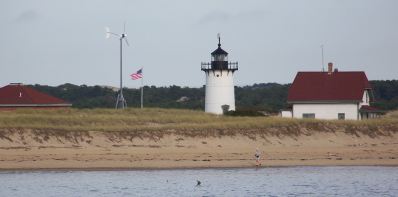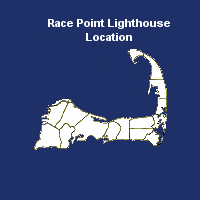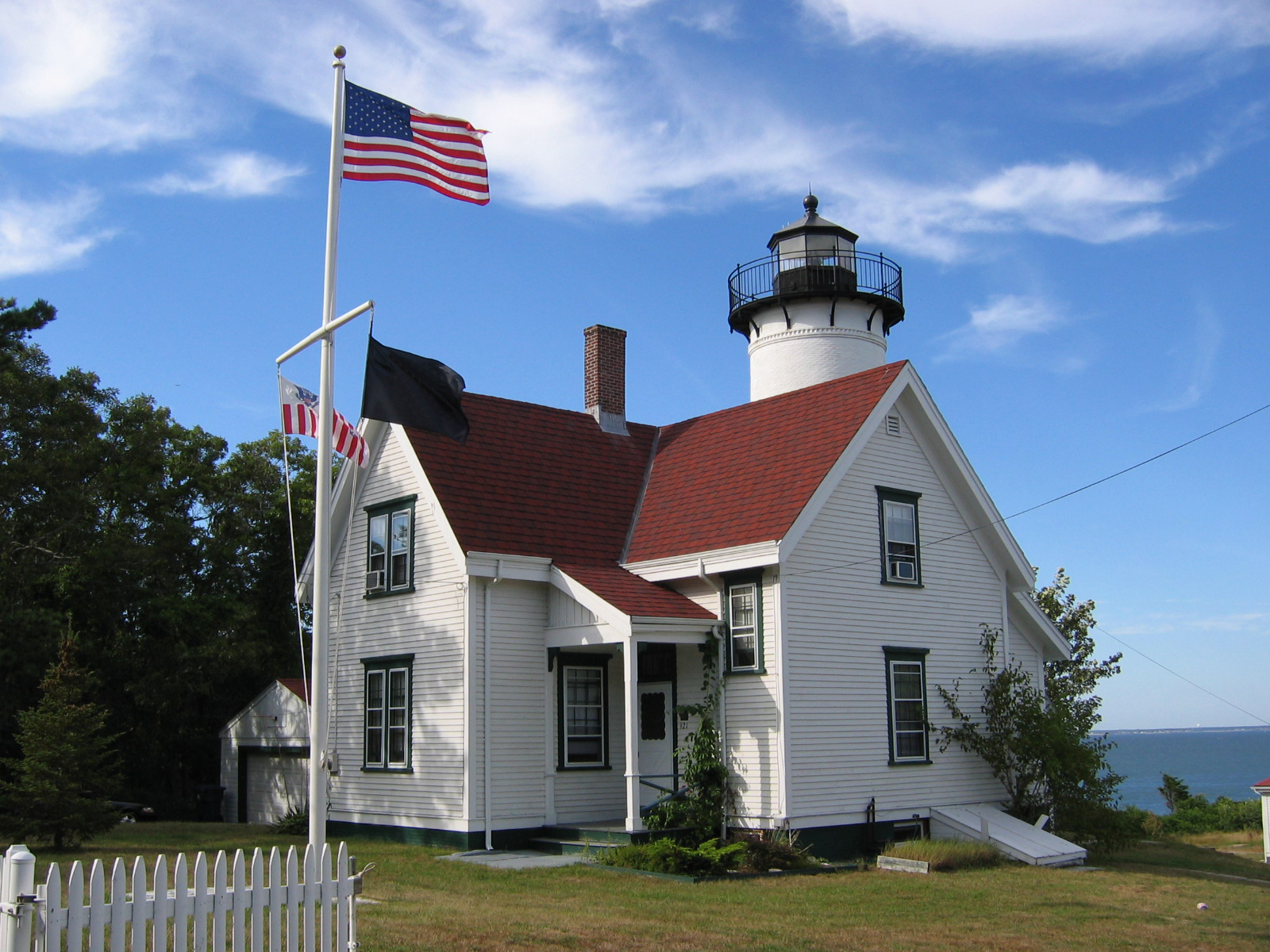Introduction
If Cape Cod is “the bent and twisted arm of Massachusetts, then Race Point is at the knuckles of the curved fingers. This Historic Lighthouse’s first rubble stone iteration was first lit roughly two hundred years ago, all the way back in 1816. Eventually it got replaced in 1876 with a substantially larger iron plated tower and a new keeper’s dwelling that remain standing to this day. It is registered on the National Register of Historic Places as Race Point Light Station and operated by the American Lighthouse Foundation. Two buildings – the Keeper’s House and the Whistle House – of the property are available for rent to visitors for overnight stays, since 1998 whereas tours are available, free of charge, on the first and third Saturdays from June until October from 10:00 am until 2:00 pm.
History of Race Point Light
More than two hundred years ago, as early as 1808, merchants and mariners of Provincetown kept asking for a Light to be raised in Race Point. Eventually, on April 27th of 1816, the United States Congress in response to the demands of the petitioners granted $8.000 in order to construct a suitable lighthouse at Race Point.
Originally, the specifications called for an octagonal wooden tower standing twenty feet tall but those plans were soon altered. The lighthouse finally went into service on November 5th, 1816, laid with common lime mortar, standing twenty five feet of rubble stone tall, with its light twenty seven feet above mean high water. It was joined to a small, stone keeper’s dwelling. It was designed to be a revolving light, so that it would be distinguished from another Light on the Highland of Cape Cod.
The Storm of 1841 and the evolution of Race Point
Until 1841, the Race Point Light did its job admirably. It was then, though, that a tremendous storm swept Cape Cod. Truro, a town next to Provincetown lost seven vessels and fifty seven men in the storms. This disaster prompted people to inspect the Race Point Light. I.W.P Lewis, in particular, while recognizing the Light’s importance was very critical of its powers of illumination, deeming them too weak, and found the tower to be leaky, with no foundation.
Race Point, thus, started undergoing substantial reworking and various improvements. Amongst others, a fog bell was installed in 1852. In 1855, its old lamps and reflectors were replaced by a new, fourth order Fresnel Lens. During those years, the whole tower was partly taken down and rebuilt, the woodwork was renewed, the roofs repaired, the chimneys partly rebuilt, the grounds graded.
1875 and beyond
Evidently though, these restoration efforts were not enough. In 1875 there were reports of substantial decay and rot. The old stone tower was replaced in 1876 by a 45 foot, brick lined, and cast iron lighthouse after the much needed funds ($ 2.800) were appropriated. The Fresnel Lens was moved to the new tower, and its illumination method changed from a flash to a fixed light. In the meantime, the original keeper’s house was torn down, and a new dwelling was built. Moreover, a new rainwater cistern was added in 1877.
The electrification and automation of Race Point
Many years passed until another important renovation of Race Point Light took place. The Lighthouse was electrified in 1957. In 1960, the keeper’s house was torn down another time, and the other, smaller house next to it was modernized. In 1972, following technological developments and advancements, the Light was automated, its Fresnel Lens removed, and a solar powered VRB-25 optic taking its place. In 1995, the surrounding property, including both houses, was leased to the American Lighthouse Foundation. The keeper’s house’s roof was repaired and the chimney got rebuilt by the International Chimney company.
The Race Point Light Station today
The Race Point properties are currently maintained by the Cape Cod Chapter of the American Lighthouse Foundation, a non-profit organization, funded primarily by donations and made up dedicated volunteer members with a mission to restore and preserve the Lighthouse, the Keeper’s house, the Whistle House, the Oil house amongst others.
The Lighthouse is open for touring on the first and third Saturdays from June until October, open from 10:00 am to 2:00 pm and free of charge. Visitors can get to the Lighthouse either by walking, via a two mile hike from the parking lot at the Race Point Coast Guard Station or by vehicle, after obtaining a National Park Service Oversand Permit.
Accommodations for approximately eleven people are available, with considerable amenities being included: A fully-equipped kitchen complete with a gas oven, two refrigerators and an outdoor grill. In addition, an outdoor shower is in place for the visitor’s convenience. Race Point boasts of environmental care and “green energy”, with even the backup generator using bio diesel fuel.
It is important to state that people planning to stay overnight should bring bed linens, towels, food and drinking water, as these are not provided for the time being.
Becoming a Volunteer Keeper at Race Point
The Cape Cod Chapter of the American Lighthouse Foundation currently recruits volunteers who are interesting in helping the ongoing restoration, upkeep and maintenance of Race Point Station, Wood End and Long Point Lighthouses. For craft savvy, skilled volunteers, whatever their expertise the vast majority of maintenance projects is being accomplished during March and April.
If a volunteer’s inclination leans more towards people rather than restoring the site, Cape Cod Chapter would welcome them as tour guides during the summer months. That would be a great opportunity to come across and get to know people from all around the globe, sharing the history of Race Point with them.
Finally, should a volunteer wish so, they may apply to become a Race Point Lighthouse Keeper. To learn more about becoming Keepers, interested parties should download and read the Keeper’s Program Requirements. In addition, filling out a Volunteer Data Form is required, which has to be submitted to the appropriate address listed on the form.
If Cape Cod is “the bent and twisted arm of Massachusetts,”
then Race Point is at the knuckles of the curved fingers.
This is one lighthouse that will let you spend an overnight
in the keeper’s house!
A light first began operating at Race Point in 1816 but
the current tower was built in 1876.
Today the light and fog horn are run by solar power.

Tours of the lighthouse are given regularly during the
the summer months. Access to the lighthouse is via
a two mile hike from the parking lot at the Race Point
Coast Guard Station.

For more photos and information about tours and overnight visits to Race Point,
visit www.racepointlighthouse.net
Also visit the American Lighthouse Foundation’s webpage
about Race Point.
An interesting page about the history of the Race Point Light
can be found at http://www.newenglandlighthouses.net/race-point-light-history.html
